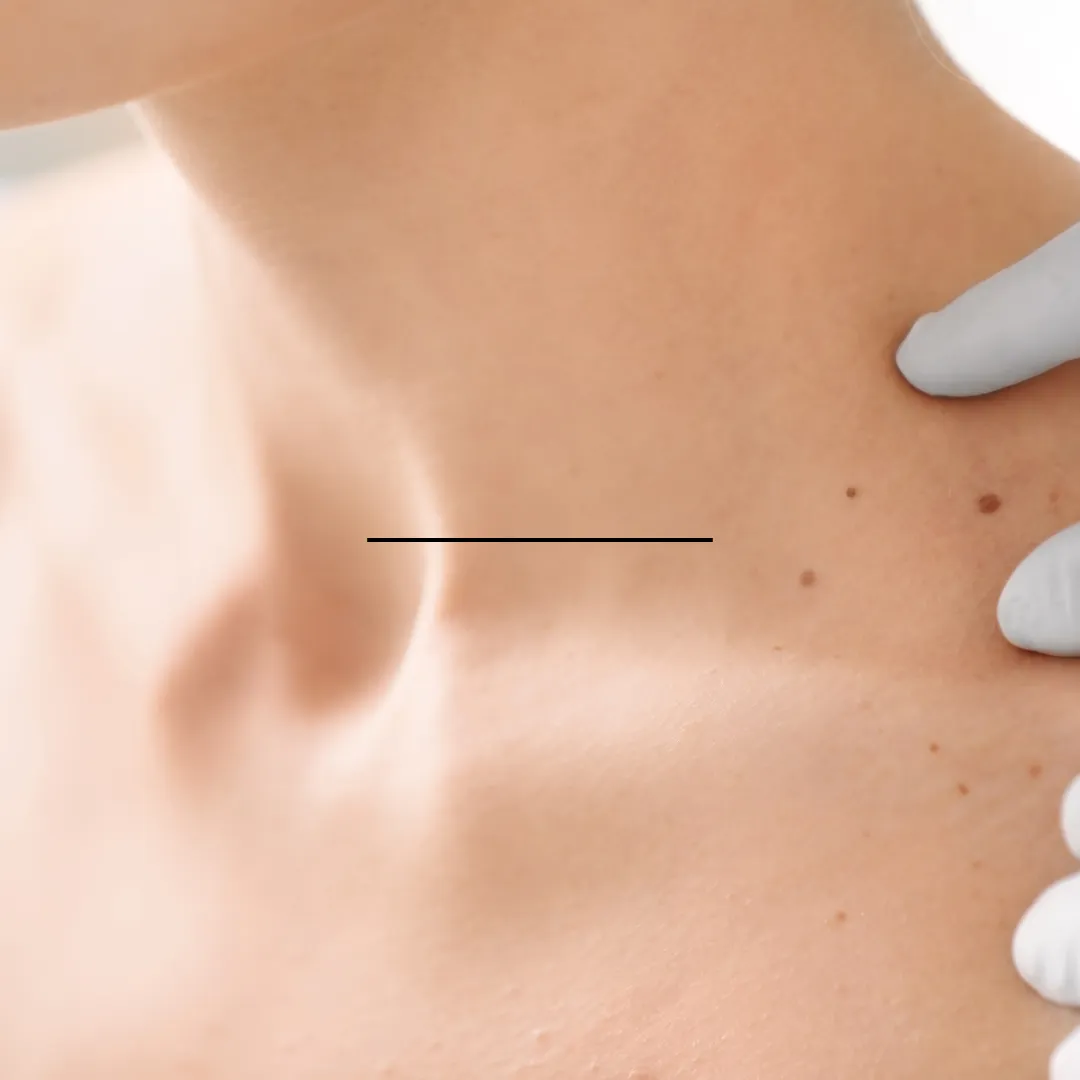Articles
Ear, Nose & Throat Care For Adults & Children Over 6 months
5420 Strickland Ave, Lakeland, FL 33812
Located In Hickman Office Park
Mon-Thu 8:30 am - 4:30 pm
Fri 8:30 am - 12:00 pm

Check Yourself: DIY Skin Tumor Detection
Welcome to Family Care ENT! As your trusted EENT doctors, we’re here to help you take charge of your skin health. Skin tumors can be scary, but early detection can make all the difference. This guide will teach you how to perform DIY skin tumor detection right at home. Let's get started!
Understanding Skin Tumors
What Are Skin Tumors?
Skin tumors are abnormal growths of skin cells. They can be benign (non-cancerous) or malignant (cancerous). Knowing the difference can help you take the right action.
Benign Tumors: These are usually harmless and don’t spread to other parts of the body. Examples include moles, warts, and skin tags.
Malignant Tumors: These are cancerous and can invade nearby tissues or spread to other parts of the body. Common types include basal cell carcinoma, squamous cell carcinoma, and melanoma.
Risk Factors
Certain factors can increase your risk of developing skin tumors:
Sun Exposure: Prolonged exposure to UV radiation from the sun or tanning beds.
Family History: A family history of skin cancer can increase your risk.
Fair Skin: People with fair skin, light hair, and light eyes are more susceptible.
Multiple Moles: Having many moles or unusual moles can be a risk factor.
The ABCDEs of Melanoma Detection
Melanoma is one of the most serious types of skin cancer. Using the ABCDE method can help you spot warning signs early.
A - Asymmetry
Check if one half of the mole doesn’t match the other half. Melanomas are often asymmetrical.
B - Border
Look at the edges of the mole. Are they irregular, scalloped, or poorly defined? These could be signs of melanoma.
C - Color
Notice the color variation. A benign mole is usually a single shade, while melanoma can have multiple shades of brown, black, or even red, white, or blue.
D - Diameter
Measure the size of the mole. Melanomas are typically larger than 6mm (about the size of a pencil eraser).
E - Evolving
Pay attention to any changes in the mole’s size, shape, color, or symptoms like itching or tenderness.
Monthly Self-Examination Routine
Performing regular self-exams can help you detect changes early. Here’s a step-by-step guide to a thorough self-exam.
Tools You’ll Need
A full-length mirror
A handheld mirror
Bright light
A ruler
A notepad or phone to record findings
A partner (optional)
Step-by-Step Guide
Examine Your Face and Scalp: Use a handheld mirror to check your face, ears, and neck. Part your hair to examine your scalp thoroughly.
Check Your Hands and Arms: Look at your hands, including the palms and nails. Examine your wrists, forearms, elbows, and upper arms.
Focus on the Torso: Stand in front of a full-length mirror. Check your neck, chest, and torso. Women should lift their breasts to examine the skin underneath.
Inspect Your Back: Use a handheld mirror to inspect your upper and lower back, buttocks, and the back of your neck and ears. A partner can help with hard-to-see areas.
Examine Your Legs and Feet: Sit down to examine your legs, including the front and back of your thighs, shins, ankles, and feet. Don’t forget to check between your toes and under your toenails.
Recording Findings
Keep a record of your findings. Note the location, size, and appearance of any moles or spots. Taking photos can help track changes over time.
Red Flags: When to See a Doctor
While DIY checks are great, some signs need professional evaluation. Here’s when to see your doctor:
Unusual Growths or Changes
If you notice a new growth or changes in an existing mole, like itching, tenderness, or pain, it’s time to see a doctor.
Non-Healing Sores
Any sore that doesn’t heal within a few weeks should be checked by a professional.
Bleeding or Oozing
Lesions that bleed or ooze without any injury are a cause for concern.
Importance of Professional Screenings
Complementing Self-Exams
Self-exams are crucial, but they don’t replace professional screenings. Your dermatologist can perform a more comprehensive check.
Frequency of Dermatologist Visits
How often you should see a dermatologist depends on your risk factors. Generally, an annual check-up is recommended, but high-risk individuals might need more frequent visits.
Preventive Measures
Prevention is always better than cure. Here are some tips to protect your skin:
Sun Protection
Use Sunscreen: Apply a broad-spectrum sunscreen with an SPF of at least 30. Reapply every two hours or after swimming or sweating.
Wear Protective Clothing: Long sleeves, hats, and sunglasses can protect your skin from UV rays.
Avoid Peak Sun Hours: The sun’s rays are strongest between 10 a.m. and 4 p.m. Stay indoors or seek shade during these hours.
Healthy Lifestyle Choices
Avoid Tanning Beds: Tanning beds expose you to harmful UV radiation.
Maintain a Healthy Diet: A diet rich in antioxidants can support skin health.
Don’t Smoke: Smoking can increase your risk of developing skin cancer.
Conclusion
Taking charge of your skin health through regular self-exams can help detect skin tumors early. Remember, the ABCDE method is a great tool for spotting potential melanomas. If you notice any red flags, don’t hesitate to see a doctor. Professional screenings complement self-exams, providing a comprehensive check-up. By following preventive measures, you can protect your skin and overall health. Stay vigilant, stay healthy, and always consult with your Family Care ENT team for any concerns!
Family Care Ear, Nose & Throat Physician

Dr. Herman Matallana, DO
Otolaryngology Specialist
Dr. Herman Matallana, known by his patients as Dr. Mat, is a dedicated physician with over ten years of experience in the treatment of Ear, Nose and Throat, Reconstructive Surgery and Allergies. Dr. Mat graduated from Kansas City University of Medicine and Bio-Sciences and did his specialization in Otolaryngology, Head & Neck and Reconstructive Surgery at Des Peres Hospital in St. Louis, MO.
What Our Clients Are Saying
What Our Clients
Are Saying

Dr Mat is a great doctor. He is attentive, caring, and best of all he listens to your concerns. His staff are all very polite, respectful and attentive to your needs. This is a doctor's office that work together as a team and they all know without a doubt what's going with each patient. Imñam very grateful that I was referred to Dr Mat.
Brenda B.
★ ★ ★ ★ ★

Dr Mat is AMAZING! He takes time to listen to your concerns and answer questions. My surgery was at Bartow Medical Center. The amount of respect the nurses and other staff members have for Dr Mat shows tremendously. They were amazing and they took phenomenal care of me.
Kylie S.
★ ★ ★ ★ ★

Dr. Matallana has been nothing but amazing for myself and my children. From tubes all the way to reconstructive surgery on my eldest child's nose. Outstanding doctor, outstanding care.
Jess W.
★ ★ ★ ★ ★




